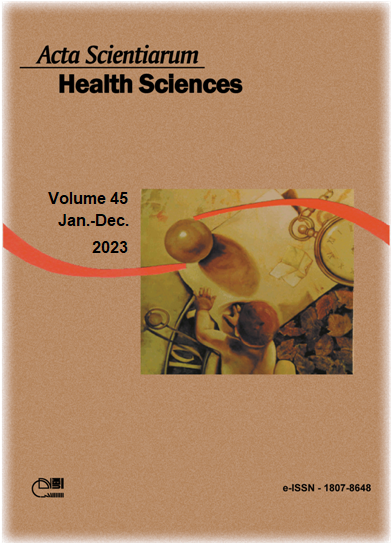Fingerprint Patterns in Women with Type 2 Diabetes Mellitus: Computerized Dermatoglyphic Analysis
Resumo
Dermatoglyphics can be used as a supporting tool in the early detection of type 2 Diabetes Mellitus in women. The present study aims to investigate the fingerprints of women with type 2 diabetes mellitus through the dermatoglyphic method, and to compare them with women without the disease. It was conducted by obtaining the fingerprints of all 10 fingers of 268 women – which is known as the dermatoglyphic method –, using the Dermatoglyphic Reader®, with data processed in SPSS (IBM SPSS), version 20.0, and a significance level of p< 0.05. The researched groups are homogeneous for the age, weight and height variables. The group of women with diabetes had a higher average number of lines on the left thumb, as well as the highest total number of lines on the left hand. Moreover, they had a greater number of deltas, in addition to presenting the whorl shape on fingers 1 to 5 of the left hand, and 1 to 4 of the right hand. We concluded that women with type 2 diabetes had a mark of observation concerning their biological individuality on their fingerprints that differs from that of women without the disease.
Downloads
DECLARAÇÃO DE ORIGINALIDADE E DIREITOS AUTORAIS
Declaro que o presente artigo é original, não tendo sido submetido à publicação em qualquer outro periódico nacional ou internacional, quer seja em parte ou em sua totalidade.
Os direitos autorais pertencem exclusivamente aos autores. Os direitos de licenciamento utilizados pelo periódico é a licença Creative Commons Attribution 4.0 (CC BY 4.0): são permitidos o acompartilhamento (cópia e distribuição do material em qualqer meio ou formato) e adaptação (remix, transformação e criação de material a partir do conteúdo assim licenciado para quaisquer fins, inclusive comerciais.
Recomenda-se a leitura desse link para maiores informações sobre o tema: fornecimento de créditos e referências de forma correta, entre outros detalhes cruciais para uso adequado do material licenciado.























5.png)







